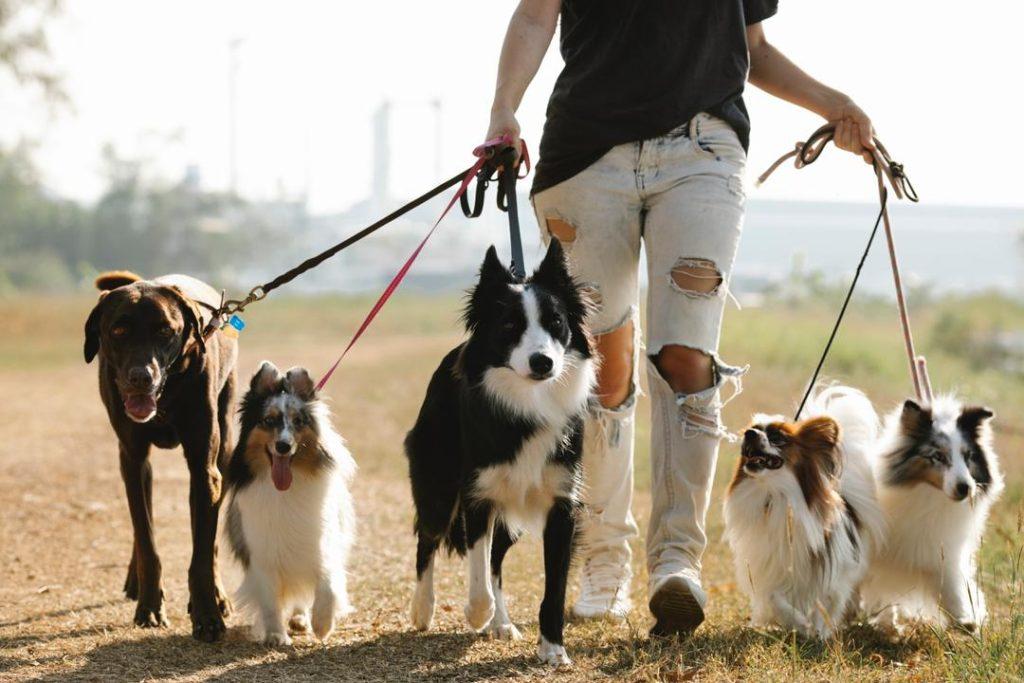Creating a harmonious home with multiple pets is both rewarding and challenging. Whether you’ve gradually expanded your pet family or recently introduced a new companion to your existing pets, managing multi-pet households requires thoughtful planning, consistent training, and dedicated resources. This comprehensive guide addresses the unique considerations that come with caring for multiple animals under one roof, from proper introductions and space management to health concerns and financial planning.
Understanding Pet Dynamics in Shared Environments
The foundation of a peaceful multi-pet household begins with understanding how different animals interact:
- Species-specific behaviors – Dogs, cats, birds, and small mammals all have unique communication styles and social structures
- Hierarchy establishment – Most pets will naturally establish some form of social order
- Territory considerations – Each pet needs personal space they can claim as their own
- Compatibility factors – Age, temperament, energy levels, and past experiences significantly impact how pets interact
Successfully managing multi-pet households means acknowledging these natural dynamics while creating an environment that minimizes conflict and stress.
Introducing New Pets: The Critical First Impression
The initial introduction between pets often sets the tone for their ongoing relationship. Follow these steps for successful integration:
Preparation Phase
- Create separate spaces – Ensure the new pet has a safe area completely separated from existing pets
- Scent exchange – Before visual introduction, exchange bedding or toys to familiarize pets with each other’s scents
- Maintain routines – Keep established pets’ feeding, walking, and play schedules consistent to reduce stress
Controlled Introduction
- Use barriers – Begin with visual contact through baby gates or cracked doors
- Supervised interaction – Keep initial face-to-face meetings brief (5-10 minutes) and closely supervised
- Positive association – Pair interactions with treats, praise, and calm energy
- Gradual progression – Slowly increase interaction time as pets show comfort and positive responses
RECOMMENDED
- Advanced Parasite Prevention in Pets: The Complete Guide to Year-Round Protection
- Essential vs. Optional: Understanding Core and Lifestyle Vaccines for Dogs and Cats
- The Importance of Grooming Your Pets Regularly
Common Introduction Mistakes
- Forcing interaction too quickly
- Punishing growling or warning signals (which can suppress important communication)
- Leaving new pets unsupervised before establishing trust
- Showing favoritism toward either new or existing pets
Creating Pet-Friendly Spaces for Everyone
Physical environment plays a crucial role in managing multi-pet households. Consider these space-related factors:
Individual Resources
- Multiple feeding stations – Place food and water bowls in separate locations to prevent resource guarding
- Adequate resting areas – Provide beds, perches, or hiding spots in different rooms
- Sufficient elimination areas – Multiple litter boxes for cats (the general rule: one more box than the number of cats)
- Toy distribution – Scatter toys throughout the home to prevent possession disputes
Environmental Enrichment
- Vertical space – Cat trees, shelves, and perches allow cats to observe from safe heights
- Separate play zones – Designate areas for high-energy and low-energy activities
- Privacy retreats – Create quiet spaces where pets can decompress away from others
- Rotation systems – For incompatible pets, consider rotating access to common areas when necessary
Health Considerations in Multi-Pet Environments
Health management becomes more complex with each additional pet:
Disease Prevention
- Quarantine protocols – New pets should be isolated and veterinary-cleared before introduction
- Vaccination schedules – Keep all pets current on vaccinations to prevent disease spread
- Parasite control – Regular preventative treatments for all household pets, even indoor-only animals
- Cleaning routines – Enhanced sanitation to prevent cross-contamination
Medical Management
- Individual veterinary records – Maintain separate, detailed health documentation for each pet
- Medication systems – Use pill organizers or digital reminders to track multiple medication schedules
- Cross-species concerns – Some common medications for one species can be toxic to others
- Emergency planning – Have transport solutions for multiple pets in case of emergency
Behavioral Training and Management
Consistent training becomes even more important when managing multi-pet households:
Establishing Rules
- Consistent commands – Use the same verbal cues and hand signals with all pets
- Equal expectations – Apply the same behavioral standards to all household pets
- Fair discipline – Address inappropriate behavior consistently regardless of which pet is involved
- Reward systems – Reinforce positive interactions between pets with immediate praise or treats
Preventing Common Behavior Problems
- Resource guarding – Feed pets separately and provide multiple high-value items
- Redirected aggression – Recognize signs of overstimulation and provide appropriate outlets
- Attention-seeking behaviors – Schedule individual time with each pet daily
- Stress-related issues – Create predictable routines and respect each pet’s tolerance levels
Financial Planning for Multiple Pets
The financial impact of multiple pets extends beyond basic food and supplies:
Budget Considerations
- Routine care multiplication – Annual veterinary check-ups, vaccinations, and preventatives for each pet
- Emergency fund – Larger emergency savings as probability of unexpected veterinary needs increases
- Insurance options – Multi-pet insurance policies often offer discounts
- Aging pet costs – Prepare for potentially overlapping senior care expenses
Cost-Saving Strategies
- Bulk purchasing – Buy food and supplies in larger quantities when appropriate
- Preventative care – Regular maintenance reduces costly emergency interventions
- DIY options – Learn to perform basic grooming at home
- Community resources – Research low-cost vaccination clinics and pet food banks
Special Considerations for Different Pet Combinations
Dogs and Cats
- Provide elevated spaces where cats can retreat from dogs
- Never force interaction between species
- Reward calm behavior when both species are present
- Consider size differentials in play and rest areas
Small Mammals with Larger Pets
- Ensure enclosures are secure and predator-proof
- Supervise all interactions, no matter how well-behaved larger pets seem
- Create exercise areas that are completely separate from predatory pets
- Be mindful of stress responses in prey animals
Multiple Dogs
- Match energy levels when possible
- Consider sex combinations carefully (same-sex aggression can be problematic in some breeds)
- Provide individual training time to maintain focus
- Understand breed-specific traits that may influence group dynamics
Multiple Cats
- Provide ample vertical territory
- Follow the n+1 litter box rule (one more box than the number of cats)
- Consider personality more than breed when determining compatibility
- Introduce gradually, as cats typically take longer to accept new feline companions
Time Management for Multi-Pet Caregivers
Successfully managing multi-pet households requires efficient time allocation:
Daily Routines
- Parallel activities – Combine compatible pet care tasks when possible
- Scheduled individual time – Dedicate specific periods for one-on-one attention
- Group training sessions – Teach pets to respect boundaries during communal activities
- Efficient exercise strategies – Use puzzle feeders or automated play devices to supplement interaction
Caregiver Support
- Pet sitters and walkers – Find professionals experienced with multiple pets
- Family involvement – Assign age-appropriate pet care tasks to household members
- Community exchanges – Consider pet care swaps with trusted neighbors or friends
- Technology assistance – Use automated feeders, cameras, and apps to monitor and manage
Creating Harmony in Your Multi-Pet Household: Key Takeaways for Success
Managing multi-pet households successfully requires thoughtful planning, consistent implementation, and ongoing adjustment as your pets’ needs evolve. While the challenges are real, the rewards of creating a harmonious multi-species family are immeasurable. By understanding each pet’s individual needs while fostering positive group dynamics, you can create a home where all your beloved companions thrive together.
Remember that each pet is unique, and what works for one household may need adaptation for another. Be patient with both your pets and yourself as you navigate the complex but rewarding journey of multi-pet parenting. With proper preparation, consistent boundaries, and plenty of love, your home can become a peaceful sanctuary for the entire furry, feathered, or scaled family.
We at Dulham Veterinary Clinic, help pet owners create harmony in multi-pet households. Our expert team provides guidance on pet introductions, behavior management, and personalized care strategies to ensure a peaceful and happy home for all your pets. Build a balanced multi-pet environment—schedule a consultation with us today!
Visit Us
No 23 Crown Court Estate 2, Orunbe Close, Oniru, Victoria Island, Lagos.
Phone Us
0806 632 9826
Mail Us
Frequently Asked Questions About Multi-Pet Households
1. How can I introduce a new pet to my existing pets?
Introducing a new pet requires patience and gradual integration. Start with separate spaces, allowing scent exchanges before face-to-face meetings. Use supervised introductions in neutral areas, rewarding positive interactions. Ensure each pet has its own resources (food bowls, litter boxes, beds) to reduce territorial disputes.
2. How do I prevent conflicts between my pets?
Prevent conflicts by setting clear boundaries and maintaining a routine. Ensure each pet gets enough attention, exercise, and mental stimulation. Provide separate feeding areas, monitor playtime, and watch for signs of stress. If conflicts arise, consult a veterinarian or animal behaviorist for tailored solutions.
3. How do I manage different dietary needs in a multi-pet home?
Pets may have unique dietary needs based on age, breed, and health conditions. Feed pets in separate areas to prevent food aggression and ensure they get the right nutrition. Use feeding schedules and puzzle feeders to manage portion control and prevent one pet from eating another’s food.
4. How can I make sure all my pets get enough attention and exercise?
Balance attention by scheduling one-on-one time with each pet daily. Engage in interactive play sessions, walks, or enrichment activities suited to each pet’s species and personality. Providing a variety of toys, climbing structures, and hiding spots can also help pets entertain themselves and stay active.

